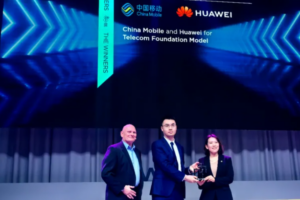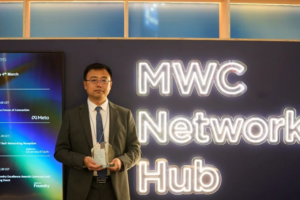During the Huawei Pre-MWC Shanghai 2021 online briefing held today, Mr. Ritchie Peng, President of Huawei’s 5G Product Line, delivered a keynote speech titled Building Optimal 5G Networks by Sustained Innovation.
Two years into the commercial adoption of 5G, mobile services maintain a strong momentum, and the mobile industry is presented with many fresh, tremendous opportunities. Huawei has proposed the “1+N” 5G Target Network strategy to make achievements that will benefit all parties through sustained innovation and collaboration with customers. Mr. Peng emphasized that “Huawei will work with industry partners to find a way to deliver ultimate user experience anytime, anywhere and build 5G networks efficiently and enhance their capabilities.”
The deployment of 5G is accelerating worldwide. The forecasts about 5G network deployment that were made one year ago have all become a reality. The number of 5G users globally has reached 200 million, and 800,000 5G sites have been constructed worldwide. The overall user experience has been improved by more than tenfold, and entry-level 5G terminals are already available at a price as low as US$350. There are a number of factors driving the rapid growth of 5G networks across the industry chain, particularly the sustained innovation by telecom carriers on services; device vendors on product forms and new applications; and system equipment vendors on systems, algorithms, and solutions; as well as industry customers on vertical applications.
The success of China’s network is attributed to scaled deployment of Massive MIMO on TDD medium bands that provide a large bandwidth, through which 5G networks can provide huge capacity and ensure continuous coverage. The deployment of 5G simplified sites is helping carriers outside China to quickly deploy 5G Massive MIMO at sites that do not have enough space for new antennas. Huawei’s innovative 5G medium-band products and solutions are helping operators provide high-quality 5G network services, as shown in the third-party tests conducted in South Korea, Germany, Austria, Saudi Arabia, and other countries and regions, during which even if carriers do not have an advantage in spectrum, their user experience still leads by 10% to 50% with the same 5G devices.
The future-oriented “1+N” 5G target network embodies innovation in all frequency bands and scenarios, delivering simplified 5G networks that are built on one high-bandwidth foundation and can support N capabilities on demand. Huawei has developed innovative 5G products and solutions to turn this vision into reality. Dual-band FDD Massive MIMO greatly improves network capacity compared with 4T4R and supports batch engineering deployment. Blade Pro, an ultra-broadband solution, incorporates three low or medium frequency bands in one module, simplifying deployment while improving the utilization of fragmented spectrums and achieving higher energy efficiency through power sharing. Easy Macro 3.0 and Book RRU 3.0, which are dual-band pole site solutions, support innovative frequency band combinations such as FDD+FDD and TDD+SUL, adding flexibility in filling up the coverage holes in both indoor and outdoor scenarios. As for the Super Uplink (SUL) solution, Huawei first proposed the combination of TDD and FDD spectrums in 2017 to enhance cell edge coverage. In 2019, the SUL solution greatly improved the uplink experience up to fourfold. In 2020, to deliver ultra-high uplink bandwidths required for industrial applications, the SUL solution, with its large-bandwidth spectrum, achieved the uplink gigabit capability.
Facing the coming golden decade of 5G, Huawei will further innovate in the “1+N” target network to build a high-bandwidth, continuously-covering network supported by Massive MIMO. In 2021, Huawei will also continue to provide enhanced Massive MIMO and BladeAAU Pro as well as ultra-broadband FDD Massive MIMO products. As for enhanced N capabilities, Huawei aims to provide ultra-broadband, multi-sector, and multi-frequency solutions to help operators simplify 5G network deployment. In terms of network automation, Huawei aims to provide corresponding solutions for the 5GtoH and 5GtoB markets while consolidating its position in the toC market, helping operators fully realize 5G multi-dimensional capabilities and enable the digital upgrade of various industries.












